Week of Aug 25, 2023 Weekly Recap & The Week Ahead
Tuesday, August 29th, 2023The good traders are the ones who can hold their ground the majority of the month and participate in that small handful of trades that are windfalls. — Linda Raschke
1. U.S. Home Sales Fell in July, Extending Prolonged Slump — Home sales fell in July for the fourth time in five months, extending one of the deepest housing slumps in recent memory.
Sales of existing homes, the majority of purchases, decreased 2.2% in July from the prior month to a seasonally adjusted annual rate of 4.07 million, the National Association of Realtors reported. That was the slowest monthly sales pace since January, and the slowest July pace since 2010. The combination of high mortgage rates, near-record home prices and limited inventory has been suffocating sales, which were down 16.6% from a year earlier in July. With mortgage rates last week rising back above 7% to a two-decade high, sluggish home sales activity is expected to continue for a while.
2. China, Russia Deliver Broadsides Against the West at Brics Summit — Russia and China used a summit of countries known as the Brics this week to air their grievances against Western powers, present themselves as defenders of developing economies and set out the case for an alternative international order. Leaders of Brics nations Brazil, India, China and South Africa, gathered in Johannesburg with Putin—who faces an international arrest warrant for alleged war crimes in Ukraine—joining by video.
3. Dick’s Sporting Goods, Macy’s Flash Warning Signs on U.S. Consumer Spending — The sporting-goods chain slashed its profit targets for the year after missing Wall Street forecasts for the second quarter. Sales slowed after a pandemic-fueled surge for outdoor gear, leaving it with excess inventory. Executives said thefts of merchandise were also higher than they expected.
Macy’s reported declining sales in the June quarter and warned that more shoppers are late on their credit-card payments. Delinquencies are viewed as a proxy for consumer health, and missed payments endanger a key source of revenue for the department-store chain. The readouts from Dick’s and Macy’s illustrate the economic challenges that persist among sellers of consumer goods. Spending on items such as apparel, electronics and sporting goods surged early in the pandemic but slowed significantly starting last year, causing whiplash among retailers that bet on buying patterns continuing at higher levels.
4. Powell Says Fed Will ‘Proceed Carefully’ on Any Further Rate Rises — Federal Reserve Chair Jerome Powell cautioned that past interest-rate increases had yet to fully slow the economy, an argument for holding rates steady for now, even though stronger and sustained growth could require higher rates to keep inflation declining. Fed officials lifted their benchmark federal-funds rate last month by a quarter-percentage-point to a range between 5.25% and 5.5%, a 22-year high, continuing the most rapid series of increases in four decades. Their next meeting is Sept. 19-20.
Powell’s speech illustrated how he is trying to thread the needle between slowing hiring, investment and spending to bring down inflation without providing so much restraint as to create a needlessly severe economic slowdown.
The week ahead — Economic data from Econoday.com:
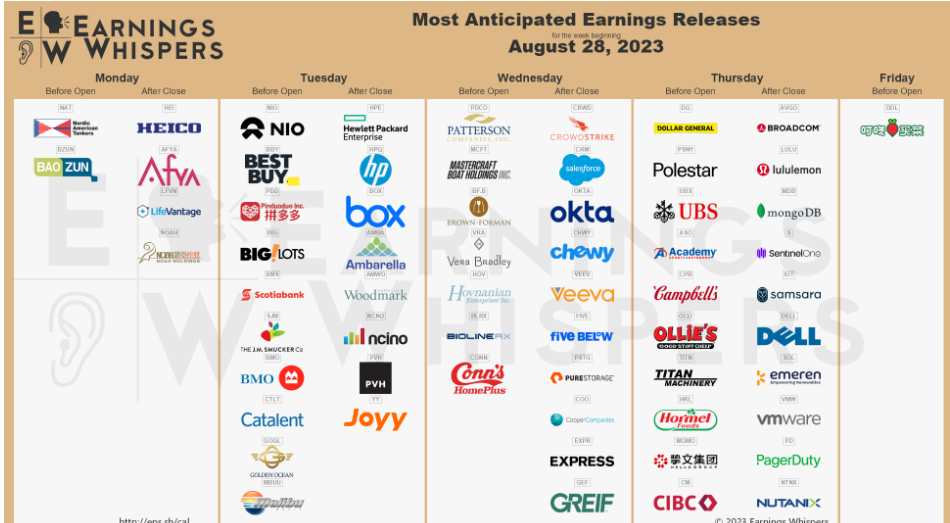
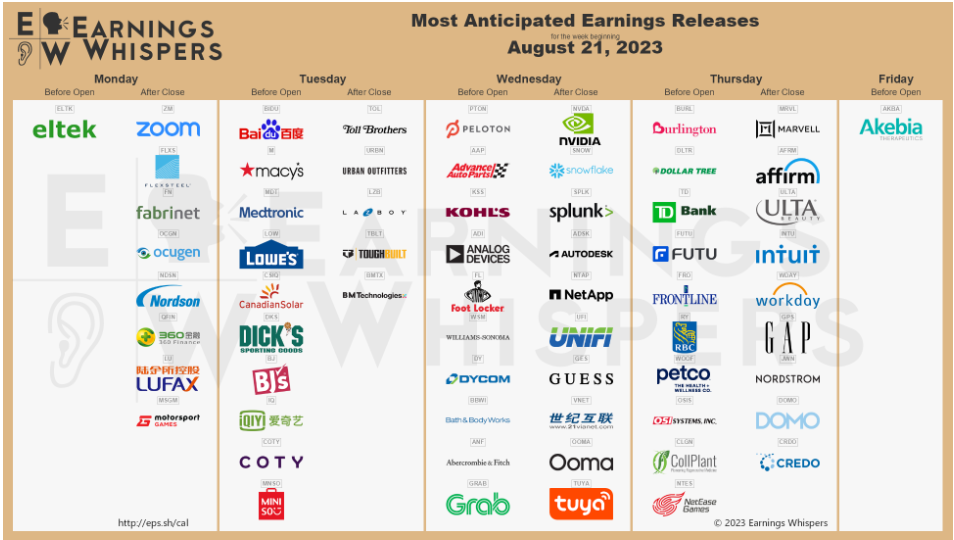 Posted in
Posted in 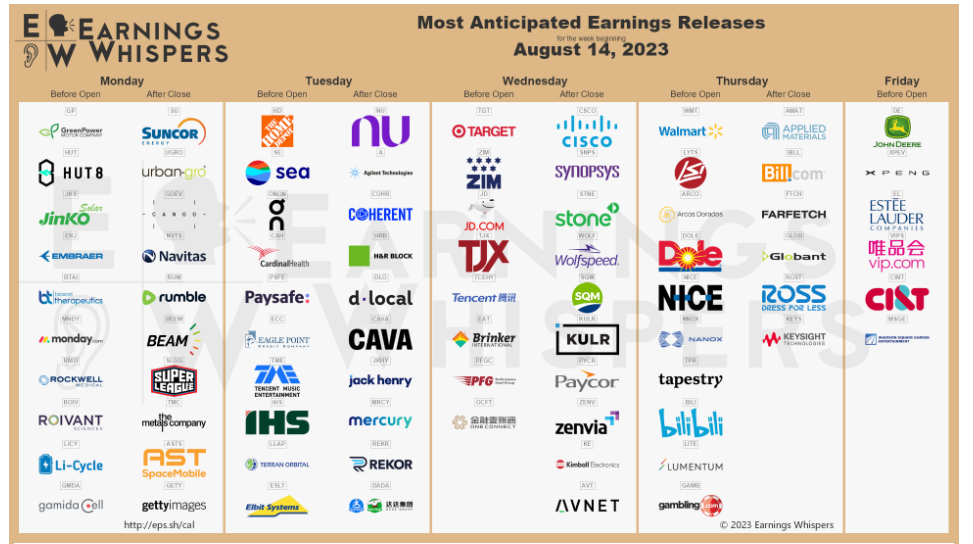 Posted in
Posted in 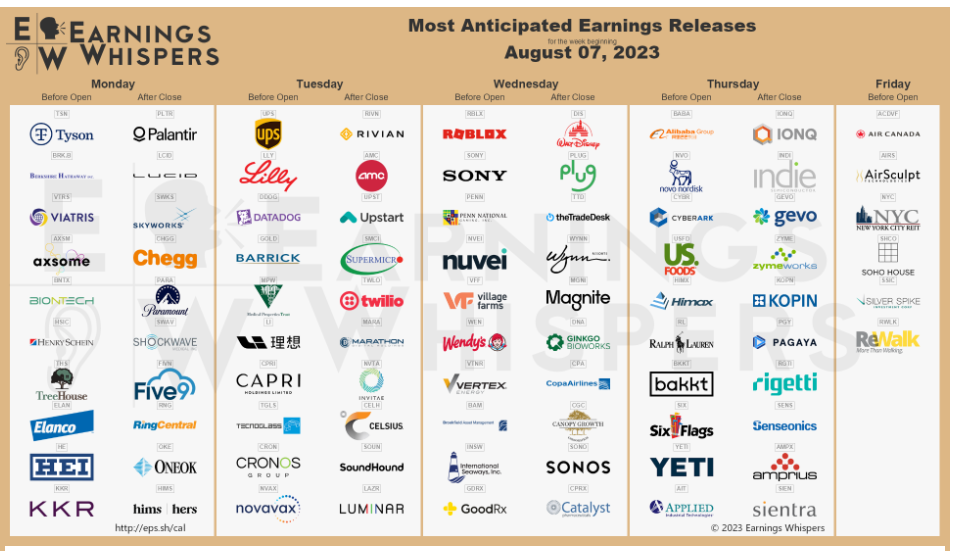 Posted in
Posted in 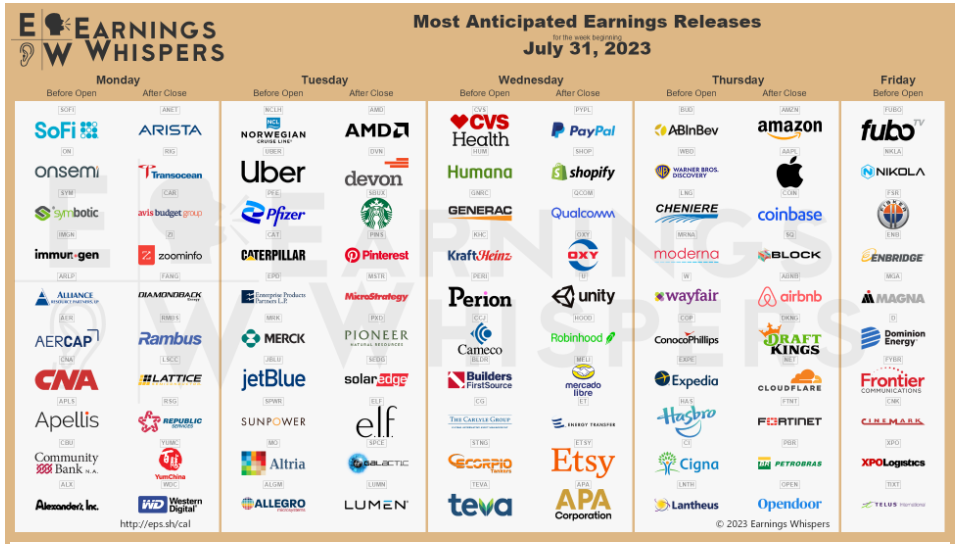 Posted in
Posted in